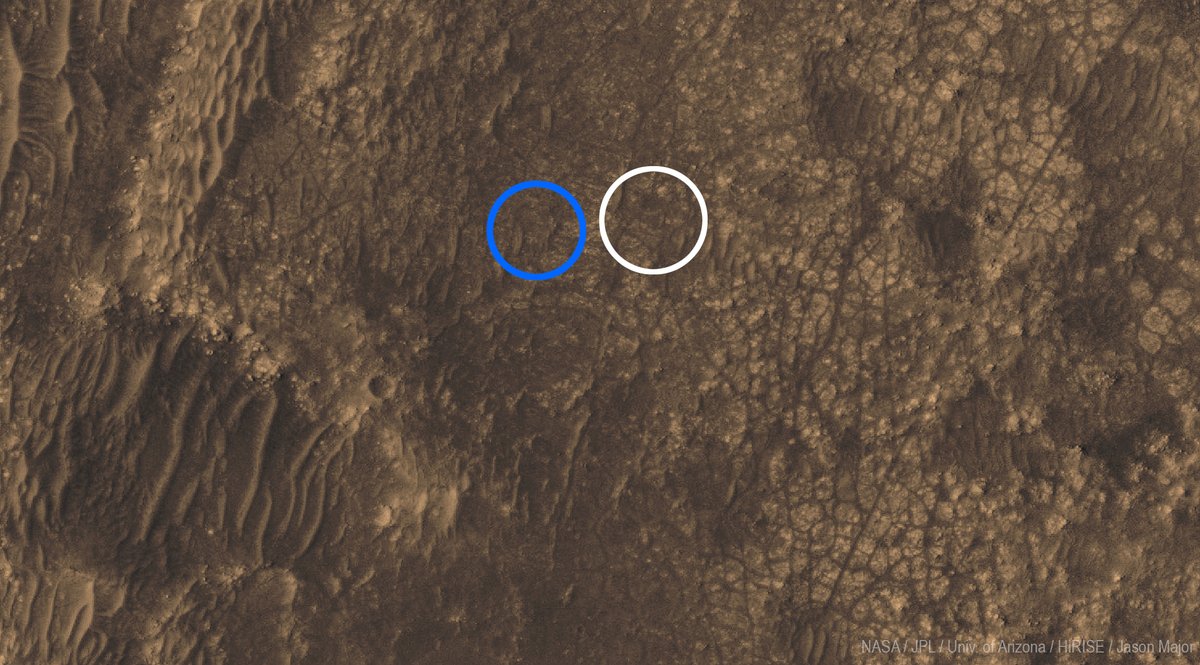
These are top-down views of @NASAPersevere's landing site—the white circle—made from a @HiRISE image (uahirise.org/ESP_046060_1985) captured in May 2016. Recolored from greyscale; north on Mars is up. #Mars2020 



Séan Doran also made some nice renderings of Perseverance's position after landing from digital terrain data
https://twitter.com/_TheSeaning/status/1362554302049435652?s=20
Here's an even more detailed view of Perseverance's landing area, this one made with the same @HiRISE data (ESP_046060_1985) but run through the HiView software to pull original JP2 resolution. Also colored; the entire area shown is about 300 meters across. #Mars2020 

Just a reminder that @HiRISE is amazing.
Sorry everyone, I was a little off in the maps I posted last night of @NASAPersevere's landing spot. Based on the location marked here mars.nasa.gov/mars2020/missi… it's actually about 20 meters west of where I originally estimated, in the blue circle. Mea culpa. 

So more accurately, Perseverance landed *here.* (May 2016 HiRISE image ESP_046060_1985 crop, uncolored, scale noted at top right.) #Mars2020 

• • •
Missing some Tweet in this thread? You can try to
force a refresh













